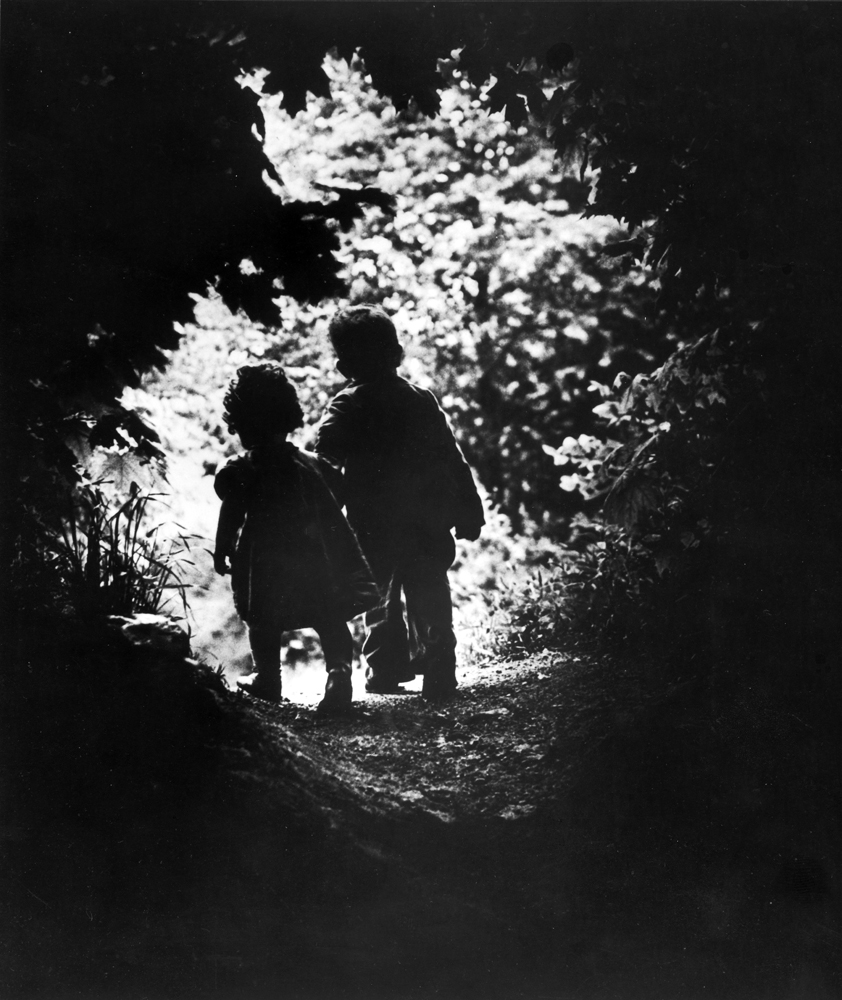
We’ve all encountered photographs so perfectly of their time that they somehow remain vital long after the forces of sentimentality and commercialization have conspired to diminish them. Alberto Korda’s portrait of Che Guevara; Alfred Eisenstaedt’s sailor and nurse in Times Square; Ansel Adams’s Moonrise, Hernandez, New Mexico; Diane Arbus’s twins—these and other classic images resist popular culture’s tendency to drag all forms of art down (or up) to the same, easily digestible level.
They endure, in a sense, not because they appeal to so many people on so many levels, but despite their appeal to so many people on so many levels.
That said, few pictures have ever been embraced by as many people, without the photograph’s admirers knowing the first thing about the fraught back-story of the image, as W. Eugene Smith’s The Walk to Paradise Garden. Over the past seven decades, the picture has evolved into a kind of visual shorthand for myriad platitudes—hope, childhood, innocence, friendship—while somehow retaining the pure, elemental power with which Smith invested the photograph when he made it on a spring day (“a warm day of lilt without drag,” Smith called it) in 1946.
A photojournalist of legendary intensity, commitment and, at times, epic irascibility, W. Eugene Smith was badly wounded while covering the fighting in the Pacific (during his “thirteenth Pacific invasion”) in the latter days of World War II. He shipped back to the States, where he endured “two painless, helpless years” of surgeries and rehab. On the spring day when he made his Paradise Garden photograph, Smith was in the midst of what might best be characterized as a spiritual crisis: his body half-mended, his confidence in his abilities as a photographer wavering, his memories of the horrors of what he’d witnessed on Saipan and Iwo Jima and other battlefields still brutally fresh in his mind, Smith had not made a photograph in many, many months. He was not sure that he could make another photograph that would, ultimately, matter.
It was to be a day, he later recalled, “of spiritual decision.” He grabbed a camera and went outside with his young children, Pat and Juanita. His body was in severe pain. He was in the midst of an “emotional and physical crisis more personally terrifying in its potency” than any he’d ever encountered. He followed his children. He watched, and waited. And then, right in front of him, he saw it unfold.
Pat saw something in the clearing, he grasped Juanita by the hand and they hurried forward. While I followed my children into the undergrowth and the group of taller trees—how they were delighted at every little discovery!—and observed them, I suddenly realized that at this moment, in spite of everything, in spite of all the wars and all I had gone through that day, I wanted to sing a sonnet to life and to the courage to go on living it. . . .
Damaged, hesitant, frightened—W. Eugene Smith had every excuse in the world not to spend that spring afternoon walking in the woods with his young children, hoping and perhaps even praying for a moment to reveal itself, a moment that would force him to raise the camera to his eye, and shoot. To his eternal credit, however, he did exactly that—and viewers have been drawing inspiration from his private, solitary triumph ever since.
Ben Cosgrove is the Editor of LIFE

More Must-Reads from TIME
- Donald Trump Is TIME's 2024 Person of the Year
- Why We Chose Trump as Person of the Year
- Is Intermittent Fasting Good or Bad for You?
- The 100 Must-Read Books of 2024
- The 20 Best Christmas TV Episodes
- Column: If Optimism Feels Ridiculous Now, Try Hope
- The Future of Climate Action Is Trade Policy
- Merle Bombardieri Is Helping People Make the Baby Decision
Contact us at letters@time.com